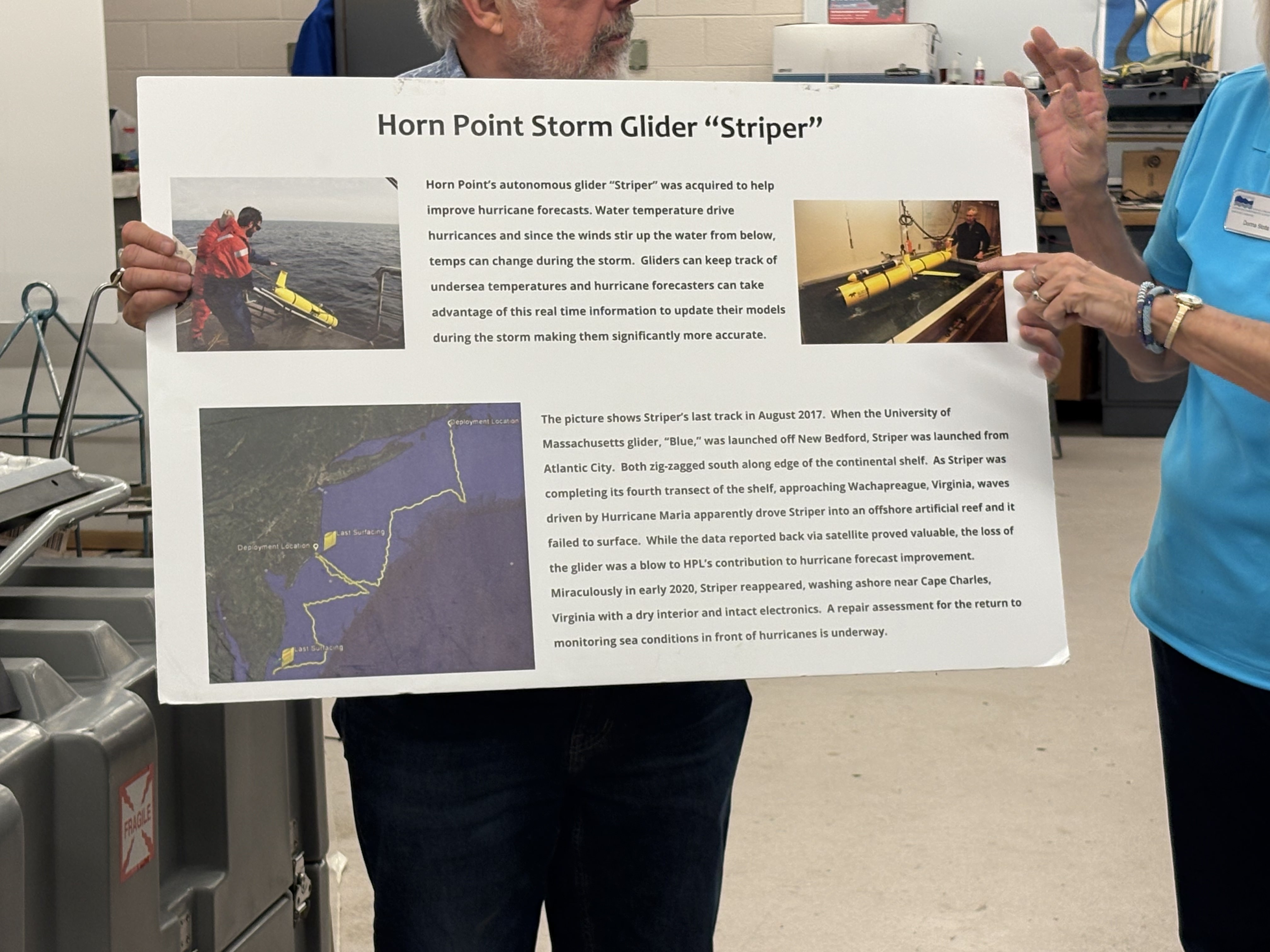Excursion Report
April 19:

Merck holding up sign
One of the biggest topics was oysters. Their populations have gone down a lot over the years because of overharvesting, disease, and pollution. That matters because oysters help filter the water and create habitats for other marine life. At HPL, they’re working on breeding oysters that are stronger and more resistant to disease. Scientists raise baby oysters in hatcheries, then move them out into the Bay. They keep track of how well the oysters grow and survive using water sensors and sometimes drones.We also learned about how sea level rise and saltwater are changing marshes. These changes affect plants, animals, and even how storms hit the land. Researchers study the marshes by tracking water levels, types of plants, and how salty the soil is. They use data from satellites and tools in the field. HPL is trying to fight this by planting native grasses and helping the marshes. Another important issue is harmful algal blooms, which are caused by pollution like fertilizer runoff. These blooms can kill fish and hurt the ecosystem. Scientists at HPL study phytoplankton (tiny plant-like organisms in the water) to understand when and why these blooms happen. They use remote sensing and special tools in the water to collect samples. This research helps figure out where the pollution is coming from and what can be done to stop it.
Blackwater National Wildlife Refuge has a different mission than HPL. Its main goal is to protect habitats for birds, especially ones that migrate or are endangered. It’s home to a lot of wildlife and helps take care of wetlands that are disappearing in other places. While HPL is more focused on research, Blackwater is more about making sure these natural areas stay safe and healthy. Driving through the Wildlife Drive was actually one of my favorite parts of the trip. It’s a cool way for the public to see the environment up close and learn about it. There are signs along the way that explain what you’re looking at, like different types of birds, marsh plants, or changes in the land. We saw how the tides affect the land—some areas flood and drain regularly, which is why the plants there are salt-tolerant. One major sign that the sea level is rising is something called "ghost forests." These are areas where trees have died because saltwater has moved into freshwater zones. Seeing those dead trees in person made climate change feel a lot more real.
Since both places are publicly funded, they put a lot of effort into teaching people about their work. At Horn Point Laboratory, they do things like open houses and student programs. One of the researchers mentioned they let people tour the oyster hatchery and do hands-on activities like using microscopes or testing water samples. It helps make science more understandable and fun. Blackwater Refuge has a visitor center with exhibits, and they do birdwatching walks and nature programs. The people working there really want visitors to care about the environment and learn how to protect it. It’s a good way to connect people with nature, especially if they don’t normally think about these issues.



